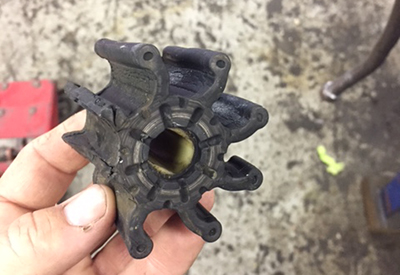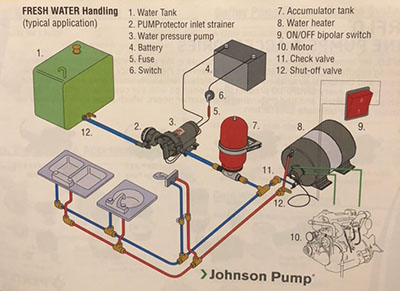Ask Andrew: Mid-winter boat hugs
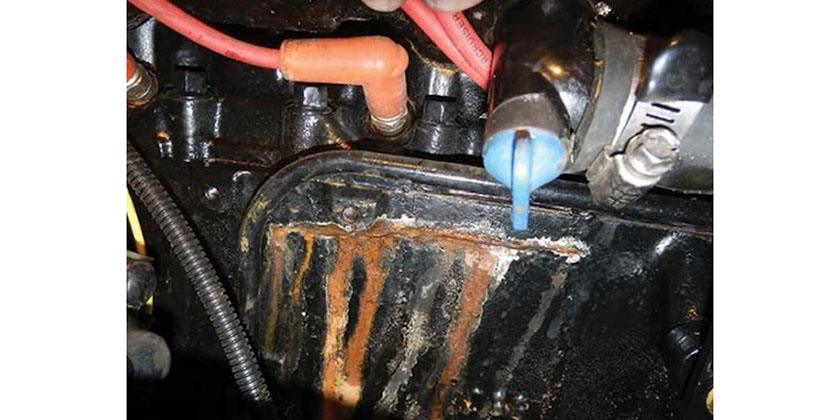
Feb 22, 2024
obvious engine damage – likely water was left in the block. It froze and expanded, causing cracking
Sometimes I wonder if my boat is thinking about me. Do do ever wonder, too?
We’re never going to know how our boats really feel about us, but we can keep the romance alive, especially during the dreary days between Valentines and St Patrick’s Day by checking in. Go for a visit, even if it’s a short one. Say hello and daydream of warm summer days together.
While you’re there, though, you may want to work your way through a checklist to make sure that all is well until spring.
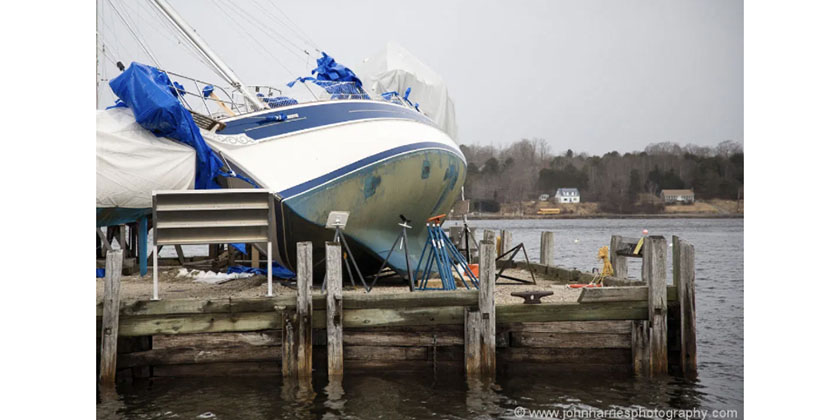
a sailboat tipped over – likely heavy winds were the culprit . photo by John Harries Photography
Over a number of years in the marine industry I’ve made some interesting discoveries when I’ve done mid-winter boat checks. Here’s a short list of the most impactful:
- A warehouse used for indoor boat storage was hit by thieves who removed 10 + stern drive units in a single evening.
– A 27’ sailboat filled with so much water that the hull became distorted against the cradle pads and had to be written off by the owner’s insurance company. The water got in somehow, despite the shrink-wrap remaining intact.
- Plugs removed from the stern drive or sail drive allowing all of the gear lube to drain.
- Raccoons settling in for winter – creating a home and nest for newborns.
- A boat/trailer at a storage facility tipped over completely during a wind-storm. Staff were not regularly present, so the boat remained tipped over for a number of weeks, causing permanent damage to both the boat and trailer.
All of this to say: maybe that trip to check on your boat should be just as practical as it is nostalgic and dream-filled. Here’s a more comprehensive list of things to check on during your visit:
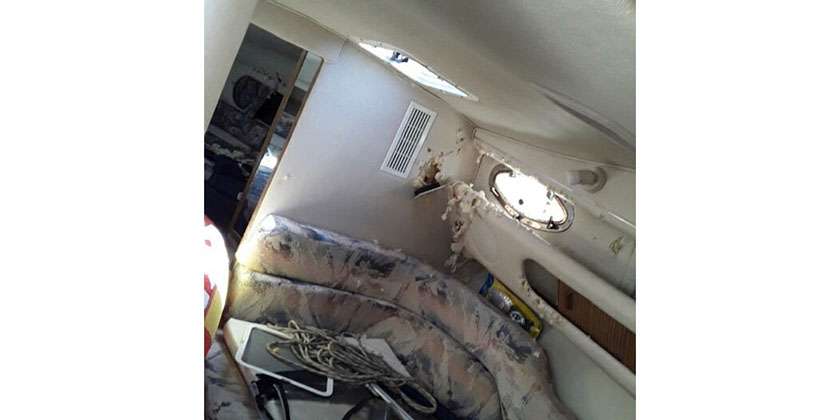
raccoons made themselves at home!
- Check for overall integrity: is the shrink-wrap/cover/tarp in place and secure? Is it chafing against exposed parts? Are the tie-downs secure and strong?
- If the boat is on a cradle or stand: is the boat level, and supported well and equally by the cradle pads? Is the cradle itself resting well on the ground?
- If the boat is on a trailer: is the trailer secure, blocked, and do the tires have adequate pressure? Are the tie-downs secure and winch straps secure?
- Check the hull: Is it supported adequately by the pads or bunks? Do you notice any water seepage, blistering or freezing damage? Any cracking or damage caused by the boat ‘settling’?
- Check the exterior machinery: Is the prop secure? If the shaft is exposed, is it in good condition? In the case of a stern/sail-drive, is it secure, with plugs in place? Any exterior damage to any components?
- Inside the boat: Any evidence of critters making a home? How is the ventilation, and moisture level? If you’ve added a product to reduce humidity, is it working? Does it need to be replaced? Are the vents adequate to allow air flow? Any mildew forming? Excess condensation?
- Check the batteries: Are any battery cables in contact with the battery? At least one terminal (preferable the negative) should be removed? Is the exterior of the battery case bulging on any side?
- Check the engine(s) – inboard, outboard, diesel or gas – check the exterior for any cracking or leaking fluids. Visually check hoses and fuel filters. Check the block (the sides of the engine) for any visible cracks, stains or leaks
- Check the bilge: check for excess water, damage, cracks, mildew, etc. A shop vac is a handy tool in the event that water is present.
- Check the hatches, doors and locks – make sure all is secure before you leave!
- Finally – in the event of any damage, check your insurance policy and put a recovery plan in place
A last note: This is a good time to dream. By beginning plans now, you can hopefully avoid the spring rush on lining up contractors and materials. This is also a great time to think of the steps you need to get to go on that dream adventure once the boat is in the water.
Enjoy the visit, and say hello to your boat for me.

Andrew McDonald is the owner of Lakeside Marine Services – a boat repair/maintenance firm based in Toronto. Andrew has worked in the marine industry for 12 years and is a graduate of the Georgian College ‘Mechanical Techniques – Marine Engine Mechanic’ program. Questions or comments for Andrew? Email him directly via: info@lakesidemarineservices.ca


